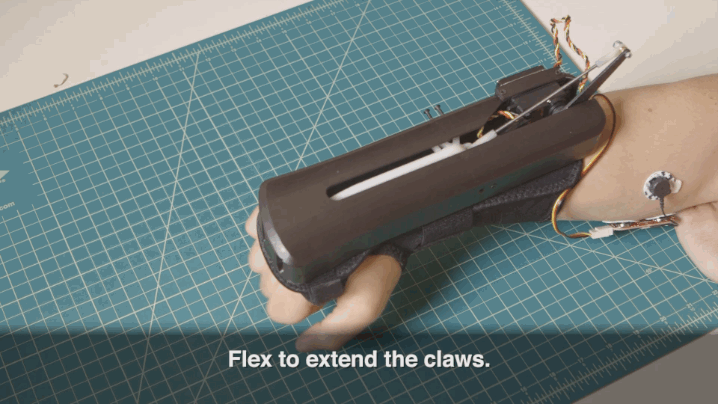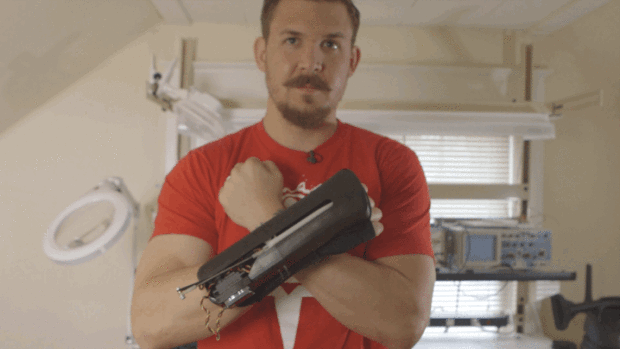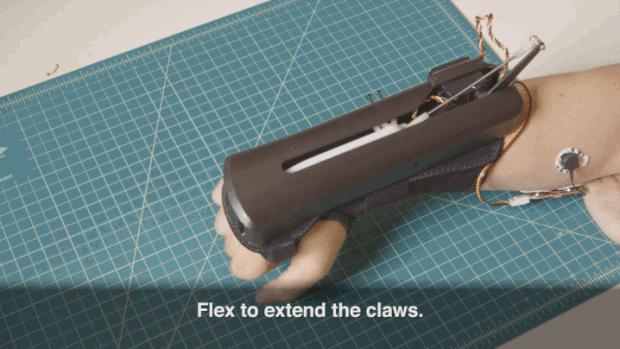One of our prime passions is to motivate the next great minds and ideas by posting informative step-by-step tutorials. To celebrate the launch of our fourth-generation muscle sensor, the MyoWare, we’ve put together a tutorial that will make you go berserk!
This tutorial will teach you to build bionic claws using the new MyoWare muscle sensor. Simply flex your forearm muscle and — SNIKT! — a fraction of a second later the 4-inch claws extend out. Relax your forearm to retract the claws. We’ve even added a muscle-activated locking mechanism in case you want the claws to stay out while keeping your muscle flexed.

As part of our successful Kickstarter campaign, we’re donating one of our sensors for every five backers to Limbitless Solutions, a non-profit that builds and donates 3D-printed myoelectric prosthetic arms to children in need around the world. MyoWare is now for sale in our store.





